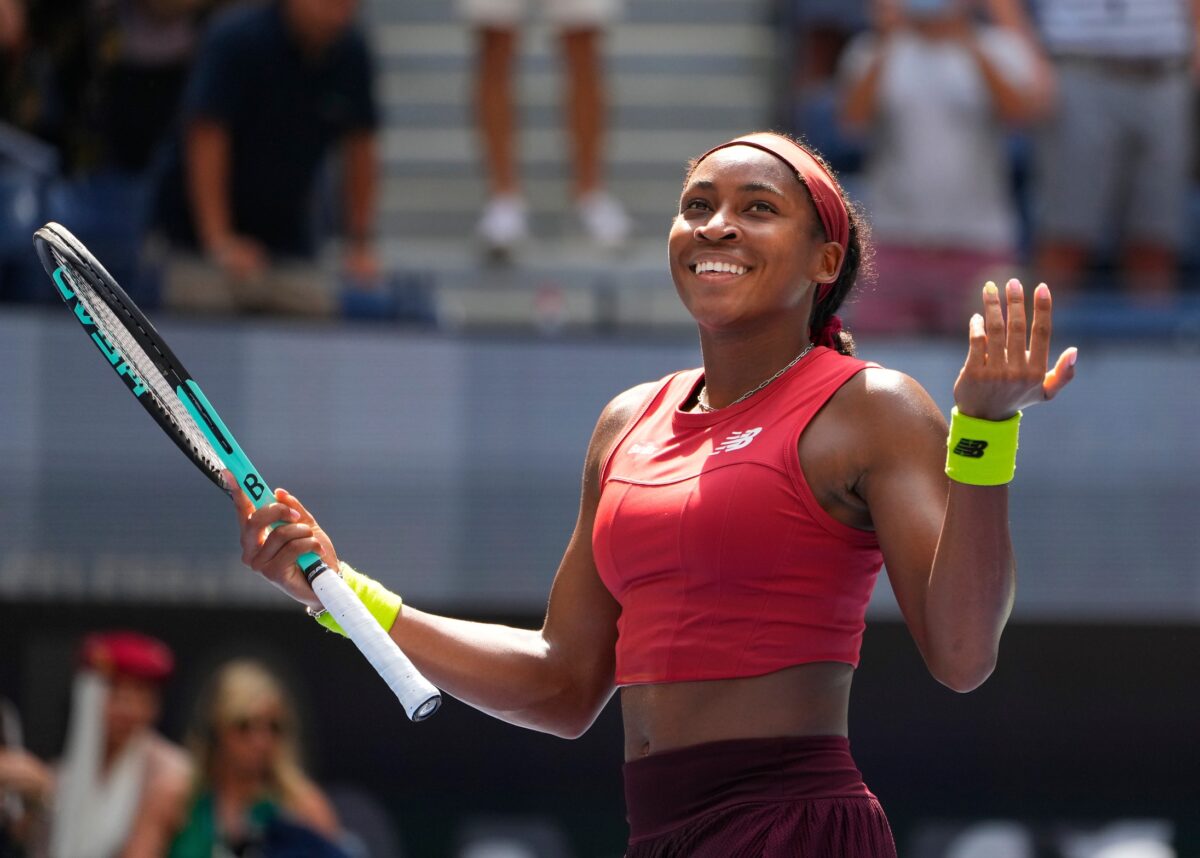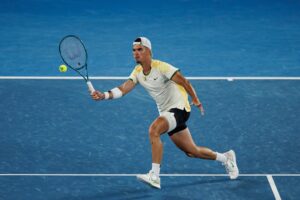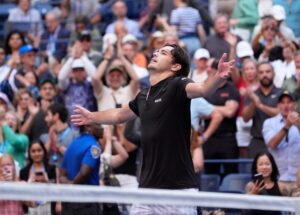Last season, Coco Gauff made colossal progress after a disappointing summer. After losing to Sofia Kenin in the opening round of Wimbledon she changed her coaching setup as Brad Gilbert came in as the man to lead her forward.
Gilbert, of course, became coach of fellow American Andy Roddick in 2003 when he was just twenty years old (one year older than Gauff at this point). Under his watch, Roddick would lift Masters titles in Montreal and Cincinnati before winning his maiden Grand Slam in New York.
Coco Gauff could only dream of such success at that point. Her game seemed premature for such heights. Little did she know that she would follow right in his footsteps (the only difference being she won the Washington Open before the US Open, rather than at the National Bank Open).
Forehand Developments
One major reason for her doubters was a faltering forehand wing. In her defeat to Shelby Rogers, Gauff hit eighteen forehand unforced errors. The weakness was so obvious and easy to exploit that it felt like genuine success was a long road away.
Yet, how Gilbert dealt with this was interesting. Instead of abolishing her extreme Western grip, he changed her stroke height and focused on her strengths more, such as serving. Gilbert is clearly a more positive coach, orientated on strength-based training rather than highlighting weaknesses. Throughout the US Open, the world #2 put more loop on her forehand brushing up the ball slightly earlier to create aggressive top spin. It meant that she couldn’t be as aggressive and play for winners, however it guarded her weaker shot making it more difficult to attack, plus added solidity.
Major technical changes often can’t be done during the season. It’s much more practical to do so in the off-season when you pair it with a multi-week training block. The looping motion was a stop-gap solution that proved to be mightily effective.
The breakthrough moment
Throughout the hard court season, Gauff was a new woman. She won three titles, lifted her first Grand Slam, and ended her winless record against Iga Swiatek. She summed it up perfectly during her on court speech after lifting the US Open trophy:
“Thank you to the people who didn’t believe in me… I tried my best to carry this with grace, and I’ve been doing my best, so honestly to those who thought they were putting water on my fire, you were really adding gas to it, and now I’m really burning so bright right now.”
Clearly, she had a heightened sense of belief. The strength-based coaching paid off. This couldn’t have been achieved had Gilbert coached from a more negative point of view regarding her forehand.
A tough 2024
With a pre-season training block under her belt, Gauff started 2024 just as she left off. The forehand was generally less loopy and more aggressive, showing that it had been addressed during Winter. The American lifted the Auckland title and reached the semifinals of the Australian Open, where she lost to eventual champion Aryna Sabalenka.
Since then, though, it hasn’t been a smooth road. By no means has she suffered a poor season; after all, she still sits fifth in the race to Riyadh. A year ago though, it seemed she would be fighting at the top end of tennis consistently, challenging the likes of Iga Swiatek. That hasn’t come to fruition yet. She has yet to make a final at any singles tournament since her success in Australia and has suffered early exits at Doha, Stuggart, Madrid and Berlin.
Wimbledon and the Olympics feel like a real opportunity missed. With Aryna Sabalenka absent at both through injury, Elena Rybakina skipping the Olympic games, and Iga Swiatek underperforming at both, there was a real chance to make a statement. Instead, Barbora Krejcikova and Qinwen Zheng reigned victorious. Gauff entered Paris with a real shot at three medals (singles, doubles, mixed doubles). Instead, she came home with zero.
Major Ranking Points to Cover
In the coming weeks, there is a bucket load of pressure on Coco Gauff’s shoulders. Last year’s Cincinnati and US Open champion has 3,000 ranking points to defend. Fail to deliver and she could drop out of the Top 10.
At Cincinnati, she has an incredibly tough draw. Her opening round clash is against Yulia Putintseva, a tricky opponent with great variety in her game who has already beaten Iga Swiatek this season. Should she progress, Anna Kalinskaya likely awaits. The World # 7 beat Gauff 2-6 6-4 6-2 in Dubai earlier this season. After a couple of potential banana skins, her probable route to glory is: Qinwen Zheng, Elena Rybakina, Aryna Sabalenka, and Iga Swiatek. It’s a big ask, to say the least.
US Open
Meanwhile, she will return to New York as the defending champion–a type of pressure she has never had to deal with on the Grand Slam stage.
The quick court complements her game, so there is no reason why she won’t go in as a favorite once more. The New York hard courts are so unique that the build-up tournaments often aren’t the best gauge. Serena Williams famously had the US Open surface replicated at her home to gain an edge. Despite Gauff doing so last season, it’s rare for a player to win both the Cincinnati Open and the US Open. In the women’s game only two others have managed to do so since 2000.
Can she do it all again? It’s unlikely, but I wouldn’t write her off.
Main Photo Credit: Robert Deutsch-USA TODAY Sports






